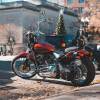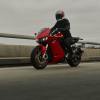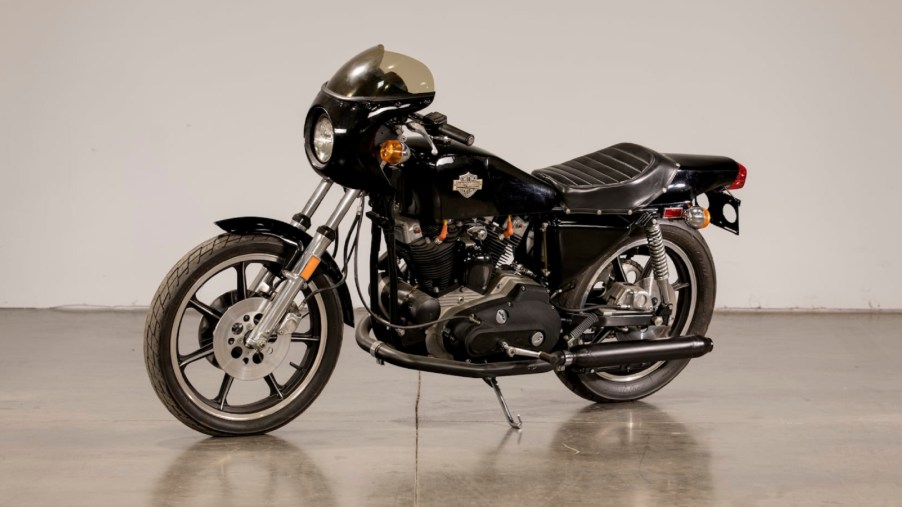
The Harley-Davidson XLCR Is the Forgotten American Cafe Racer
Though the electric LiveWire is an honest performance bike, Harley-Davidson’s bread-and-butter is still cruisers, tourers, and baggers. But the American motorcycle company has attempted to branch out over the years, though not always successfully. And with its current condition, it’s likely the previously-teased café racer and flat tracker concepts won’t be made anytime soon. But even if they were, it wouldn’t be the first time Harley made a café racer. Because in the 1970s, it had the Harley-Davidson XLCR.
Harley-Davidson XLCR: history, specs, and features
In the 1970s, Harley-Davidson was in a situation not unlike the one it finds itself in today. Japanese brands like Honda and Kawasaki, as well as European brands like BMW, offered smaller, cheaper, and arguably better-made alternatives to Harley’s cruisers. After sporting goods company AMF bought it, Harley-Davidson tried to diversify.
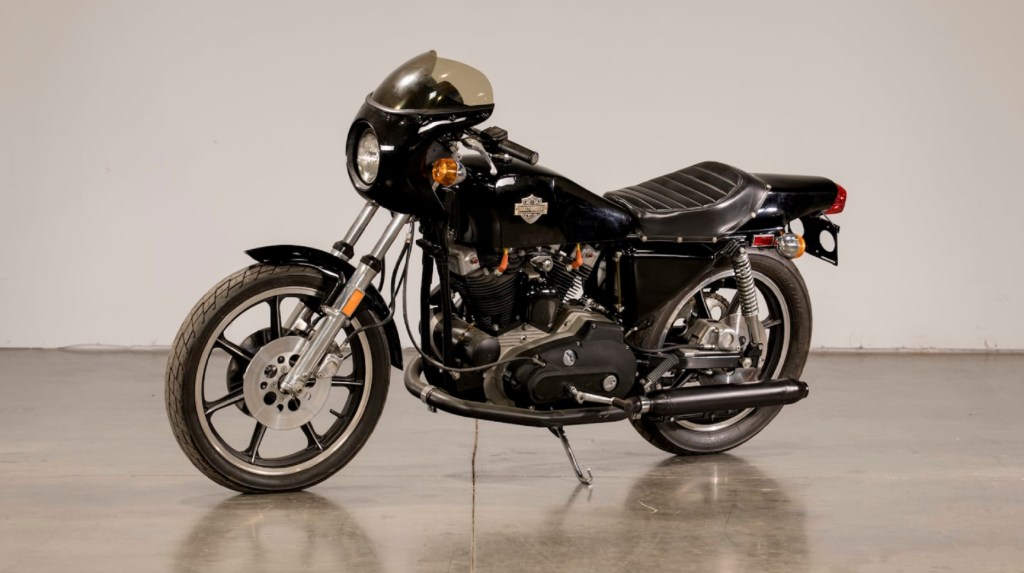
At the time, Mecum explains, the most popular trends in motorcycling were choppers/bobbers, flat trackers, and café racers. Harley’s design chief, Willie G. Davidson, was particularly inspired by the latter, Motorcyclist reports. So, using the contemporary Sportster as the base, he designed the 1977 Harley-Davidson XLCR.
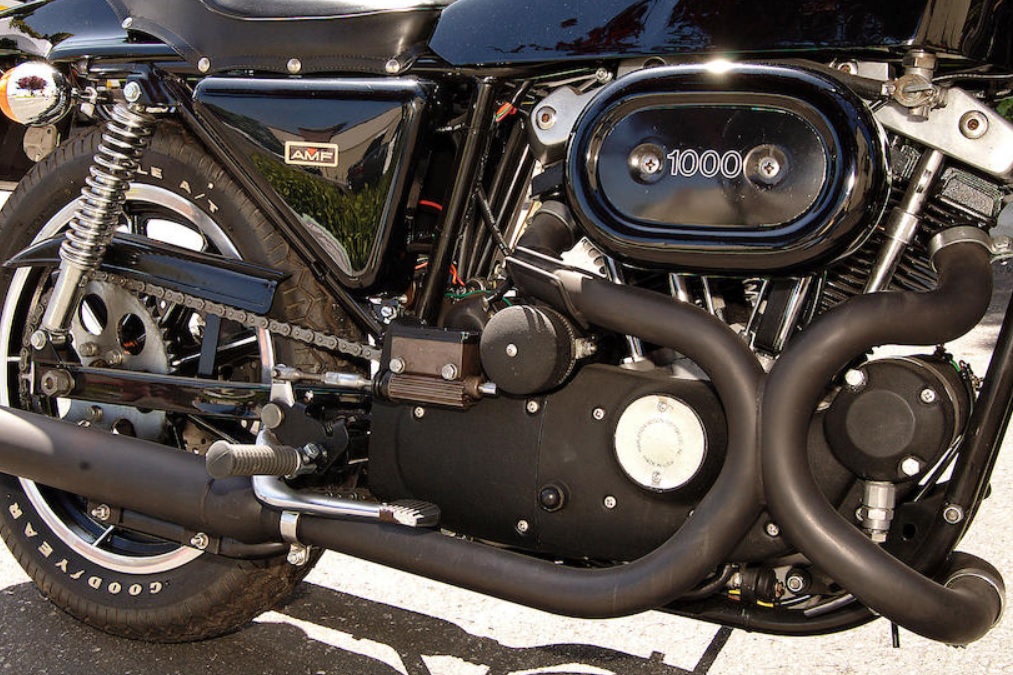
The Harley-Davidson XLCR’s engine is pulled directly from the Sportster, Motorcycle Classics reports. It’s a 998cc V-twin rated at 61 hp and 52 lb-ft, linked to a 4-speed transmission, Revivaler reports. But, although the XLCR’s front section is from the Sportster, the rear shocks and swingarm come from the XR750 racer. And unlike the normal Sportster, the XLCR has front and rear disc brakes, with the front being dual-rotor discs.
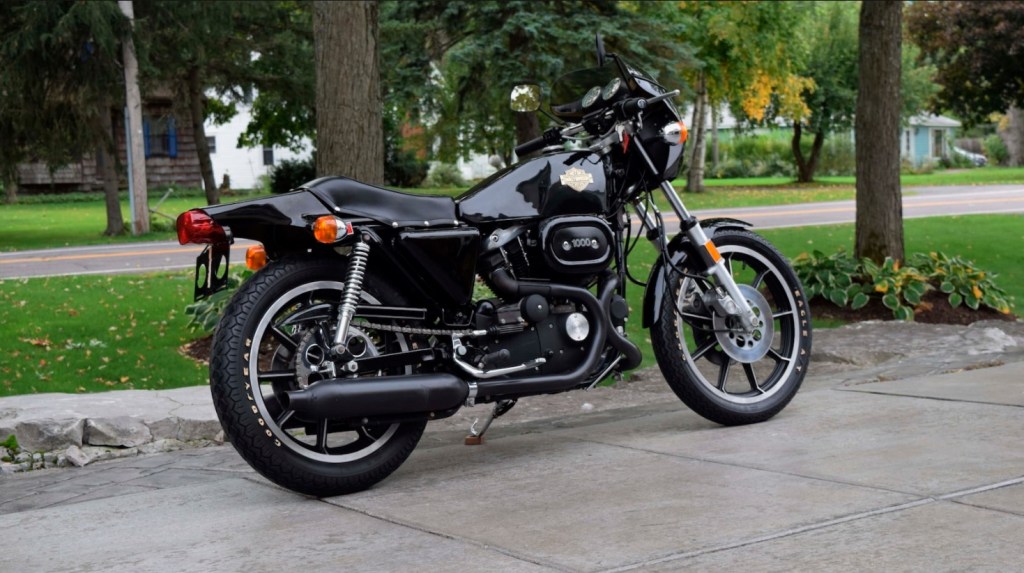
In addition to the mechanical changes, the Harley-Davidson XLCR had several cosmetic changes from the Sportster, The Rake reports. The front fender is smaller, the fuel tank is squarer, and the bike has a ‘bikini’ fairing. And it’s all colored black, including the ‘siamesed’ exhaust and mag wheels.
Compared to the Sportster, the XLCR’s footpegs are rear-set. But instead of cafe racer-style clip-ons, the XLCR has flat bars. The instrumentation consists of a speedometer, tachometer, and several warning lights.
Riding the Harley-Davidson XLCR café racer
When it was new, the XLCR was the fastest bike in Harley-Davidson’s lineup, CycleNews reports. A good rider could run the ¼-mile in under 12 seconds, with a trap speed around 100 mph. And it definitely stood out from the rest of Harley’s bikes.

However, the XLCR lagged behind the competition somewhat. At 515 pounds, it was a relatively heavy bike, Motorcycle Classics reports. The Kawasaki Z1 is about 30 pounds heavier but has 21 more horsepower. And though the Honda CBX is almost 100 pounds heavier, it has roughly 40 more horsepower. As a result, both are noticeably faster.

And while its handling was OK for the time, the XLCR isn’t as sporty as a Velocette Venom or Norton Commando. And its brakes weren’t quite as effective. Plus, while its V-twin has good low-end torque, at highway speeds it sends a lot of vibrations through the handlebars and seat. And the fairing creates some front-end lift above 90 mph. The bike may have looked like a café racer, Mecum reports, but it was more of a cruiser at heart.
That being said, the Harley-Davidson XLCR has some inherently good traits. The throttle and clutch are easy to pull, Motorcyclist reports, and the transmission shifts well. With a set of modern brake pads and suspension upgrades, it can make a great vintage-style ride.
Getting one today
Unfortunately, the Harley-Davidson XLCR’s styling didn’t find many takers amongst the brand’s traditional buyers. Harley made 3133 between 1977-1979, Revivaler reports. The price also didn’t help—new, the XLCR cost the equivalent of $15,345.
However, its rarity and unique status mean the XLCR today is something an appreciating asset. In 2010, a 1978 example sold at a Bonhams auction for $6,612. But today, Cycle Trader lists several examples at $15,000-$20,000. But Hagerty reports a good-condition XLCR typically goes for about $11,000.
Follow more updates from MotorBiscuit on our Facebook page.

